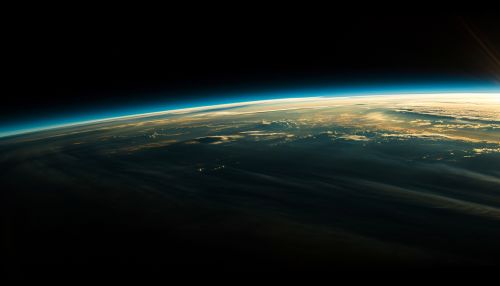Planetary Atmospheres
Introduction
Planetary atmospheres are layers of gases that surround planets, including the Earth. They are held in place by the planet's gravity and can vary in thickness, composition, and temperature. The study of these atmospheres and their dynamics is known as planetary science, a branch of astronomy that deals with the scientific study of planets, moons, and planetary systems.


Composition of Planetary Atmospheres
Planetary atmospheres are primarily composed of gases, with the exact composition varying from planet to planet. For instance, Earth's atmosphere is primarily composed of nitrogen (78%) and oxygen (21%), with trace amounts of argon, carbon dioxide, and other gases. On the other hand, the Martian atmosphere is mostly carbon dioxide (95%), with minor amounts of nitrogen and argon.
Formation of Planetary Atmospheres
Planetary atmospheres are believed to form through several processes, including outgassing, comet impacts, and capture from the solar nebula. Outgassing is the process by which gases are released from a planet's interior, usually through volcanic activity. Comet impacts can also deliver gases to a planet's atmosphere. Lastly, a planet can capture gases from the solar nebula, the cloud of gas and dust from which the solar system formed.
Evolution of Planetary Atmospheres
Over time, planetary atmospheres can change due to various processes such as atmospheric escape, weathering, and biological activity. Atmospheric escape is the process by which gases in a planet's atmosphere are lost to space. This can occur through several mechanisms, including thermal escape, non-thermal escape, and impact erosion. Weathering is the breaking down of rocks and minerals on a planet's surface, which can release gases into the atmosphere. Biological activity, such as photosynthesis and respiration, can also alter a planet's atmosphere.
Classification of Planetary Atmospheres
Planetary atmospheres can be classified based on their structure and composition. One common classification scheme divides atmospheres into primary, secondary, and tertiary types. Primary atmospheres are those that are captured directly from the solar nebula, secondary atmospheres are those that form through outgassing, and tertiary atmospheres are those that are altered by biological activity.
Atmospheres of Specific Planets
Earth
Earth's atmosphere is a mixture of nitrogen, oxygen, and trace amounts of other gases. It is divided into several layers, including the troposphere, stratosphere, mesosphere, thermosphere, and exosphere. The troposphere is the lowest layer and is where weather occurs. The stratosphere is above the troposphere and contains the ozone layer, which protects life on Earth from harmful ultraviolet radiation.
Mars
Mars has a thin atmosphere composed mostly of carbon dioxide, with traces of nitrogen and argon. The Martian atmosphere is much thinner than Earth's, with a surface pressure less than 1% of Earth's. Despite its thinness, the Martian atmosphere is thick enough to support weather, including dust storms that can cover the entire planet.
Venus
The atmosphere of Venus is extremely dense and composed almost entirely of carbon dioxide, with traces of nitrogen and sulfuric acid. The surface pressure on Venus is about 92 times that of Earth, equivalent to the pressure at a depth of about 900 meters in Earth's oceans. Venus' atmosphere also contains thick clouds of sulfuric acid, which create a strong greenhouse effect that makes Venus the hottest planet in the solar system.
Jupiter
Jupiter has a thick atmosphere composed mainly of hydrogen and helium, with traces of methane, ammonia, water vapor, and other compounds. Jupiter's atmosphere is notable for its Great Red Spot, a storm that has been ongoing for at least 300 years. Jupiter's atmosphere also contains colorful bands and clouds, which are created by the planet's strong winds and rapid rotation.
